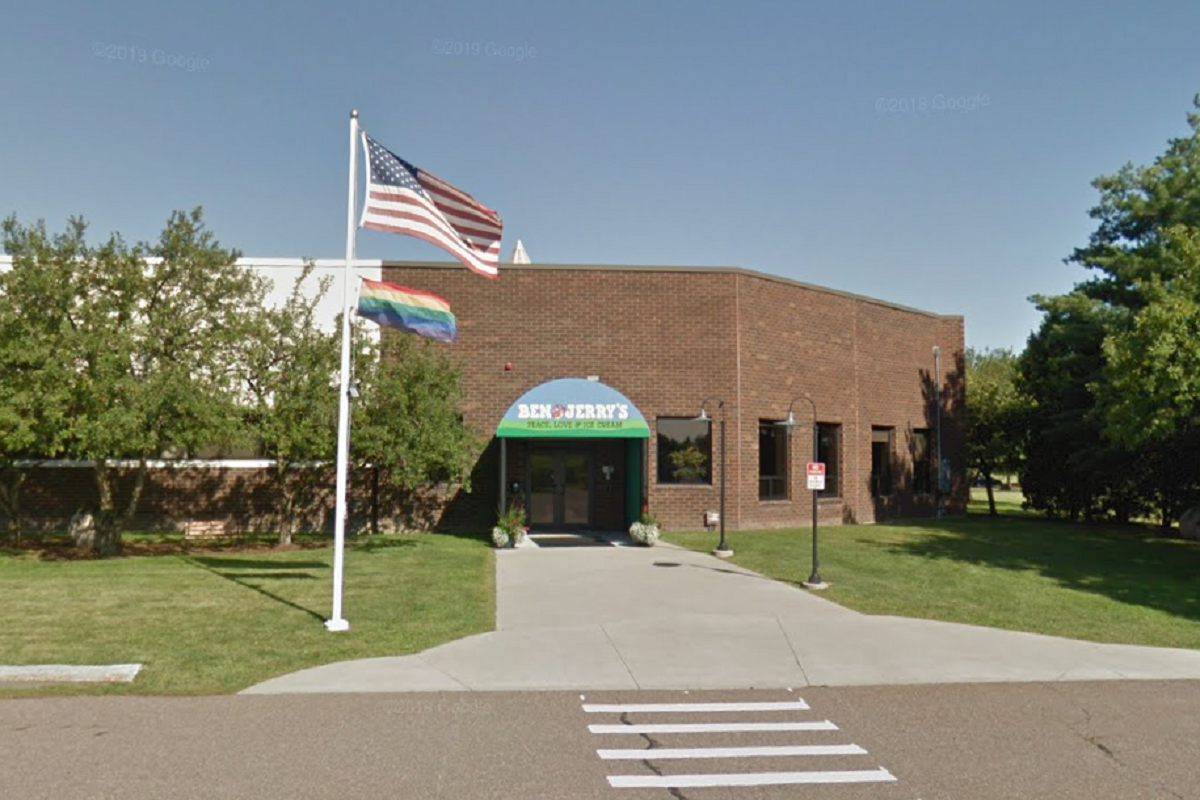After Ben & Jerry's put out an Independence Day message calling for Indigenous land to be returned to those it was "stolen" from, some have suggested the ice cream company lead by example by returning the Native American land its modern-day headquarters is built on.
"The U.S. was founded on stolen Indigenous land," the company said in a statement. "This year, let's commit to returning it."
The acknowledgement of historic tribal lands is a contentious subject, pitting the claims of Native Americans, whose ancestors were subject to violent persecution and displacement, and the status quo of a modern nation with entrenched borders.
While some say colonized ancestral lands should be at least partially returned, others say that it is impossible to decide which of the various groups to have claimed land throughout history it should be returned to.

Some have argued that Ben & Jerry's Vermont headquarters is itself built on what it describes as "stolen" land of the Abenaki tribe—prompting questions as to whether it would give the property up and move elsewhere.
"What's stopping you? Go ahead—give up all your property," Dan Crenshaw, a GOP congressman for Texas responded to the company's call. "It would be easy to do, so why aren't you doing it?"
"I'm wondering when you'll give up the land your factory is on," Zeek Arkham, a New York police officer and internet personality, said. "And move your business to someplace on this planet that hasn't been conquered, settled, fought over, or claimed."
Commentator John Nolte wrote in right-wing outlet Breitbart that the ice cream maker's statement was an "epic self-own."
Newsweek approached Ben & Jerry's via email for comment on Thursday.
Who Are the Abenaki?
According to Encyclopaedia Britannica, the Abenaki were an Algonquian-speaking confederacy of Native Americans, which came about through the union of several tribes in the 17th century to protect against encroachment from another confederacy of tribes that occupied what is now New York.
The Abenaki are recorded as interacting with various European settlers during the 16th century but their population was reduced by the effect of diseases from Europe—as was common for many New World peoples.
As French and English colonies began to grow through the 17th century, the Abenaki traded with settlers, exchanging furs for metal tools and glass beads.
The Indigenous group later allied with French colonizers against English settlers as territorial disputes became more prevalent. Following a series of defeats at the hands of the English, which reduced the tribe's numbers further, they withdrew to Canada.
"An anecdote from this period tells the story of a warrior named Nescambuit who killed more than 140 enemies of [French King Louis] XIV, and who received the rank of knight," according to the official history of the Council of Abenakis.
In the present day, the Abenaki are an established tribe in Odanak, Canada, to the north-east of Montreal, and occupy a total area of less than seven square kilometers. The Council of Abenakis in Odanak puts the modern-day population at 2,101—double what it was a decade ago.
Four Abenaki tribes are recognized in Vermont, though their populations are unclear.
During the early half of the 20th century, a state-sponsored eugenics program in Vermont saw some Abenaki sterilized. The Nulhegan Band of The Coosuk Abenaki Nation, one of the recognized tribes, described this as "ethnocide."
Where Was Abenaki Territory?
Depending on the date of the map and the source, the exact boundaries of the territory the Abenaki held differs, but the consensus is the confederacy once controlled a vast swathe of the north-west, reaching from the northern border of Massachusetts to New Brunswick.
In between those north-south boundaries, the tribe controlled between the St. Lawrence River to the East Coast.
Native Land Digital, a Canadian non-profit organization with a majority Indigenous board, documents historic territorial claims of Native American tribes in consultation with their descendants.

According to its map, Abenaki territory stretches from northern Massachusetts in the south to near the border between Maine and New Brunswick in the north. On the western side of the territory, its claim stops at Lake Champlain—the modern-day border between Vermont and New York.
Another map, devised by the University of New Hampshire's Anthropology Department and the Cowasuck Band of the Pennacook Abenaki People, gives a similar view of Abenaki land.
Ben & Jerry's headquarters, as stated on the company's website, is based in a business park in southern Burlington, a city that sits on the eastern bank of Lake Champlain—which would, according to the two modern maps, put it within historic Abenaki territory.
However, this territory is not federally recognized and Ben & Jerry's headquarters does not sit in any modern-day tribal lands.
Uncommon Knowledge
Newsweek is committed to challenging conventional wisdom and finding connections in the search for common ground.
Newsweek is committed to challenging conventional wisdom and finding connections in the search for common ground.
About the writer
Aleks Phillips is a Newsweek U.S. News Reporter based in London. His focus is on U.S. politics and the environment. ... Read more





